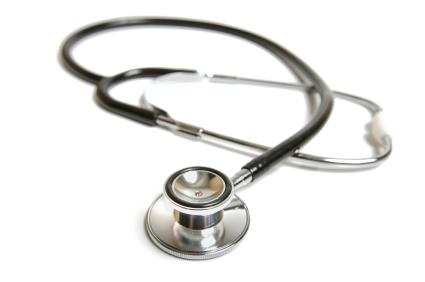Vital signs are just that—vital. They’re the readings of your body’s basic functions; signs used to confirm that someone is alive. Often, they’re a clinician’s first peek at a patient’s overall health. They’re also an important insight into a patient’s health when making a diagnosis or evaluating recovery.
Often, vital signs are taken by a nurse assistant or a medical assistant. These individuals receive training and many times certifications to conduct this sort of health investigation. Allied health schools like ABC Training Center offer medical assistant training programs in NYC for people interested in providing this type of patient care.
Blood Pressure – What It Is
Most people are familiar with the process of having a blood pressure taken, but do you know what it’s measuring? The purpose of taking a blood pressure reading is to measure the force of blood flow against the artery walls. Blood pressure is comprised of two numbers, systolic and diastolic pressure.
Systolic blood pressure, or the top number in the reading, is the force against your artery walls when your heart beats. Diastolic blood pressure, or the bottom number in the reading, measures the force of blood flow on the arteries when your heart is at rest.

How to Interpret the Reading
Blood pressure can be an important indicator for cardiovascular health as well as other conditions. However, the numbers aren’t just “normal” and “bad.” Additionally, one high blood pressure reading shouldn’t be interpreted as hypertension, but, instead, should be observed to ensure it’s not a regular event.
According to the American Heart Association, a normal blood pressure reading is a systolic blood pressure of less than 120 mmHg and a diastolic blood pressure of less than 80 mmHg. Prehypertension is read as a systolic of 120-139 mmHg and diastolic 80-89 mmHg, while hypertension starts at a systolic pressure of 140-159 mmHg and diastolic pressure of 90-99 mmHg. This is known as stage I hypertension.
Stage II hypertension is a systolic blood pressure of 160 mmHg or higher and a diastolic blood pressure of 100 mmHg or higher. Hypertension is diagnosed when a patient has consistently high blood pressures over time. It’s important to monitor and control blood pressure because high blood pressure can lead to kidney disease and other organ damage.
Body Temperature
Body temperature is something that generally everyone has some level of experience with. The average human body temperature varies quite a bit, based on age, gender, and exercise. Foods and liquids consumed can also impact body temperature.

Readings and Indications
A normal adult body temperature is usually in the range of 97.8 to 99 degrees Fahrenheit. Some medical conditions (other than infection) can cause the temperature to be above or below average, though the body temperature itself doesn’t put the patient in danger.
Hypothermia is a condition that occurs when the body’s core temperature is below 95 degrees. It can be caused by being in cold temperatures without proper protection. It can also be caused by medical conditions like thyroid disease or serious trauma. The threshold for cold exposure is varied, based on age. Babies and older adults are much more susceptible to the condition.
By contrast, high body temperature, or fever, is indicated by a reading of approximately 101.5 degrees Fahrenheit or above. A fever is a sign of infection in the body. It can also be caused by sunburn, heat exhaustion, medications, immunizations, and tumors.
Respiratory Rate
Respiratory rate is the number of breaths you take in a minute. A normal respiratory rate is somewhere between 12 and 20 breaths per minute. It’s a very simple measurement, but it’s a great way to judge a patient’s level of distress.
What It Means
Respiratory rate increases when a fever is present or when someone is in distress. This can be from choking, pneumonia, or heart failure. There are conditions involving several body systems that present with an elevated respiratory rate.
On the opposite end of the spectrum is a low respiratory rate. Some possible causes of a low respiratory rate are opiate overdose and intoxication. Low respiratory rate can also be caused by other conditions, and it warrants investigation.
Pulse
Pulse rate is how many times your heart beats a minute. Besides the number of times a heart beats, there are a few other observations made when taking a pulse rate. A practitioner observes the strength of the pulse and the rhythm as well.
A normal pulse rate is between 60 to 100 beats a minute, with female pulses (age 12 and older) trending a bit higher than male pulses. People who do a lot of athletic training will also have lower pulses.
What It Means
A pulse is checked to confirm blood flow after a trauma, in those with vascular disease, or in other diseases affecting the vascular system. A high pulse rate could indicate thyroid disease, fever, stress, or stimulant use, while a low pulse rate could indicate an underactive thyroid gland, heart disease, or regular fitness routines. A heart rate can be normal without the pulse being completely normal.
A weak pulse might suggest heart disease, peripheral artery disease, or a blood clot (in the arm or leg). The pulse rate is an important insight into a patient’s cardiovascular health and their general state of health.
Oxygen Saturation
This “vital sign” is not always measured by every healthcare provider. It’s a non-invasive way to measure oxygen saturation or the amount of oxygen in the blood. A small device called a pulse oximeter is used, and it may or may not be present in the office you work in. A normal oxygen saturation depends on age and underlying health condition.
Interpreting the Readings
A normal pulse oximetry for adults is between 95 and 100%, with a reading being considered low at 90%. When the oxygen in the blood is too low, it’s called hypoxemia. This can be caused by a variety of medical conditions, including asthma, pulmonary embolism, and sleep apnea. Low readings warrant further investigation unless it is a normal reading for the patient based on a past diagnosis.
Vital signs are a key part of evaluating a patient’s health. They give key insights into a body’s functions without performing invasive procedures. These readings assist doctors in making diagnoses and evaluating a patient’s overall health.
If you’d like to aid doctors in caring for and diagnosing patients, then start your journey by learning about medical training schools in NYC today!
Resources
- http://www.hopkinsmedicine.org/healthlibrary/conditions/cardiovascular_diseases/vital_signs_body_temperature_pulse_rate_respiration_rate_blood_pressure_85,P00866/
- http://www.webmd.com/a-to-z-guides/what-is-hypothermia#1
- http://www.mayoclinic.org/diseases-conditions/fever/basics/causes/con-20019229
- https://meded.ucsd.edu/clinicalmed/vital.htm
- ttps://medlineplus.gov/ency/article/007198.htm